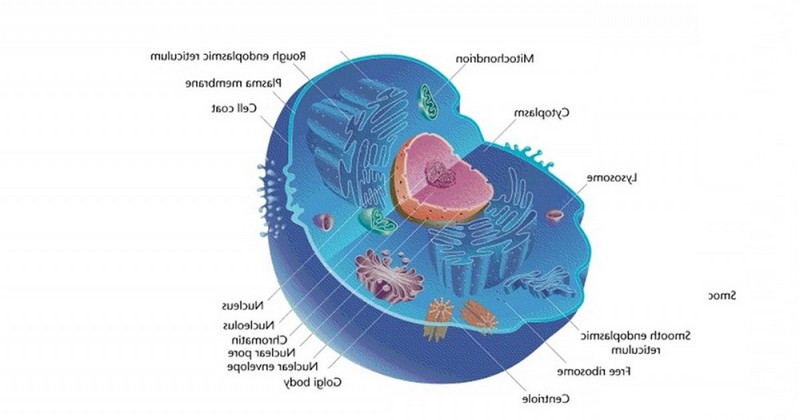The 12 differences between eukaryotic cell and prokaryotic cell

The basic unit of life does not always have the same characteristics: it can have many forms.
The cell is the smallest unit of life, and is a fundamental component in defining us as living beings.and is a fundamental component in defining us as living beings. Because its size is so small, it was not discovered until the microscope was invented.
It is from the 19th and 20th centuries that the cell theory was developed, which explains that the cell is the structural unit of living beings and affirms that all living beings are formed by one or more cells. It is also considered a functional unit, since it carries out all vital functions (nutrition, relationship and reproduction). Likewise, the cell is the genetic unit, which contains the hereditary material and all come from another pre-existing cell.
In this article you will find explained the main differences between prokaryotic and eukaryotic cells.
Different types of cells
Thus, a cell can be defined as the structural, functional and genetic unit of all living things, and can be classified in different ways. Mainly into prokaryotic (or prokaryotic) and eukaryotic (or eukaryotic) cells. The latter, in turn, can be classified into animal and plant cells, although protozoa, algae and protozoa, algae and fungi are also eukaryotic organisms..
The two large groups of cells (prokaryotes and eukaryotes) have similarities and differences. The former are unicellular organisms, which lack a defined or true cell nucleus and in which DNA is dispersed throughout the cytoplasm.. They are bacteria. Eukaryotes are organisms composed of cells that possess a true nucleus, bounded within a lipid bilayer, and with organized cytoplasm.
Similarities between prokaryotic and eukaryotic cells.
Although prokaryotic and eukaryotic cells are different in many respects, they also have certain similarities. Both contain genetic material, i.e. DNA. They have a cell membrane covering them. Their basic chemical structures are similarBoth are composed of carbohydrates, proteins, nucleic acid, minerals, fats and vitamins.
Both prokaryotic and eukaryotic cells contain ribosomes, which produce ribosomes. contain ribosomes, which produce proteins. Both types of cells regulate the flow of nutrients and waste matter in and out of the cells. They also reproduce, although in different ways. They need energy to survive, contain cytoplasm inside the cells and a cytoskeleton. Both kinds of cells have a lipid bilayer, known as the plasma membrane, which forms the boundary between the inner and outer side of the cell.
Differences between prokaryotic and eukaryotic cells
Between prokaryotic cells and eukaryotic cells there are also certain differences. Scientists believe that eukaryotic cells evolved from prokaryotic cells.
But what are these differences? In the following lines we explain them to you.
1. Nucleus
While eukaryotic cells have a well-defined nucleus, prokaryotic cells do not. Inside the nucleus of eukaryotic cells, genetic information is stored..
2. Origin
It is estimated that prokaryotic cells have their origin around 3700 million years ago, while eukaryotic cells have their origin around 2000 million years ago.
3. Size
Prokaryotic cells are smaller0.1-5.0µm in diameter. Eukaryotic cells are larger: 10-100µm in diameter.
4. Cellular organization
Prokaryotic cells are usually unicellular, while eukaryotic cells are multicellular.
5. Genetic material
The genetic material of eukaryotes is stored in the nucleus; however, in the case of prokaryotic cells, it is dispersed throughout the cytoplasm. The DNA of prokaryotic cells is not associated with histones.
6. Composition of the plasma membrane
In eukaryotic cells, plasma membranes contain sterols.. In the case of prokaryotic cells, only in mycoplasmas.
7. Shape of the genetic material
In prokaryotic cells, the DNA is circular. In eukaryotic cells, however, the DNA is linear and, as mentioned above, is associated with histone proteins.
8. Number of chromosomes
Prokaryotic cells have only one chromosome. However, eukaryotic cells have multiple chromosomes.
9. Plasma membrane
In prokaryotic cells, the plasma membrane is composed of peptidoglycan or murein. In eukaryotic cells, it consists of phospholipids.
10. Organelles
Prokaryotic cells have an inner matrix with non-membranous organelles.. Prokaryotic cells have membranous organelles in the cytoplasm (e.g. Golgi apparatus).
11. Reproduction
Reproduction in prokaryotic cells occurs by asexual reproduction, by binary fission. In contrast, in eukaryotic cells reproduction occurs by mitosis and meiosis.
12. Living organisms
Prokaryotic cells are bacteriaProkaryotic cells form part of animals, plants, fungi, protozoa and algae.
Differences between animal and plant cells
Within the different types of eukaryotic cells we can find animal and plant cells, which, although they show some similarities, are also different in some aspects.
In terms of shared characteristicsBoth have a well-defined nucleus, where they house the DNA. They also perform similar production processes, including mitosis and meiosis. Cellular respiration is necessary to obtain energy, and they share some cellular components (Golgi apparatus, endoplasmic reticulum, ribosomes, etc.).
In terms of differences, plant cells store energy in the form of starchwhile animal cells store energy in the form of glycogen. The former are usually larger than the latter, and tend to have a rectangular shape. Although both have cell membranes, the cell wall is only present in plant, algal, archaeal and fungal cells. Plant cells are able to synthesize all essential amino acids, which is not the case in animal cells.
(Updated at Apr 13 / 2024)